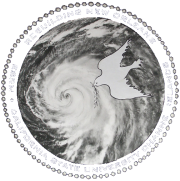Day 6
Today started out with our plant surveys. After completing a lot of work we headed to southern Louisiana where the decline of wetlands is very drastic and problematic.
We met up with a man named Foster. He spoke to us about the land of southern Louisiana. I learned that southern
Louisiana did not always look the way it does right now. The Mississippi River is a delta, or a river that naturally divides into smaller rivers and empties into a larger body of water. This means that over time the Mississippi River twists and turns, changing and evolving the land. As it flows the river carves and deposits large amounts of nutrients and sediments from higher parts of the river. However, today there are levees in place along the Mississippi delta that keep it flowing “straight”, making it a river and preventing it to naturally occur as a delt. The purpose of this is to prevent the river from branching and alternating which would then result in the formation of sand bars in the middle of the river. Sand bars would inhibit the pathway for cargo boats. The Mississippi River is known for its selling and trading ports. If the river were to alter and form sand bars, the industrial boats would not have access to the city. In turn this would impact the city economically, but the levees are also impacting the city environmentally.
Man has depleted majority of this land within the last 120 years. As a result major environmental consequences have occurred. The biggest consequences were caused from-
(1) Harvested oyster banks for food and other uses- causing a decrease in water filtration of the ocean
(2) Cutting down of cypress trees for their wood- accelerating the depletion of wetlands and inhibiting the wetlands ability to act as a buffer against storms
(3)BP oil companies- oil spills causing negative affects on wildlife and then their ability to contribute to their niche in the ecosystem.
(4) Levee industry- the installation of levees throughout Louisiana which have prevented the land from naturally draining and caused more unnecessary flooding.
Together these factors serve as a catalyst for wetland degradation. Over the last 50 years the state has seen a significant loss of wetland. If nothing is done, it is predicted that the amount of land lost will increase significantly.
The real debate comes down to whether it is more important to save the city or the enviornment. However what most people do not seem to realize is that if we don’t save the enviornment, there will be no city.
Foster shared with us some ideas to restoring the land
(1) Lower the levees and utilize a drainage system allowing the delta to flow again
(2) Build homes higher to prevent effects of flooding
(3) More projects
The main idea is that a balance needs to be found if we wish to see recovery in Louisiana. However it’s not going to be easy. It’s going to take a lot of change, education, and knowledge. But Foster is confident that it can be done. 































